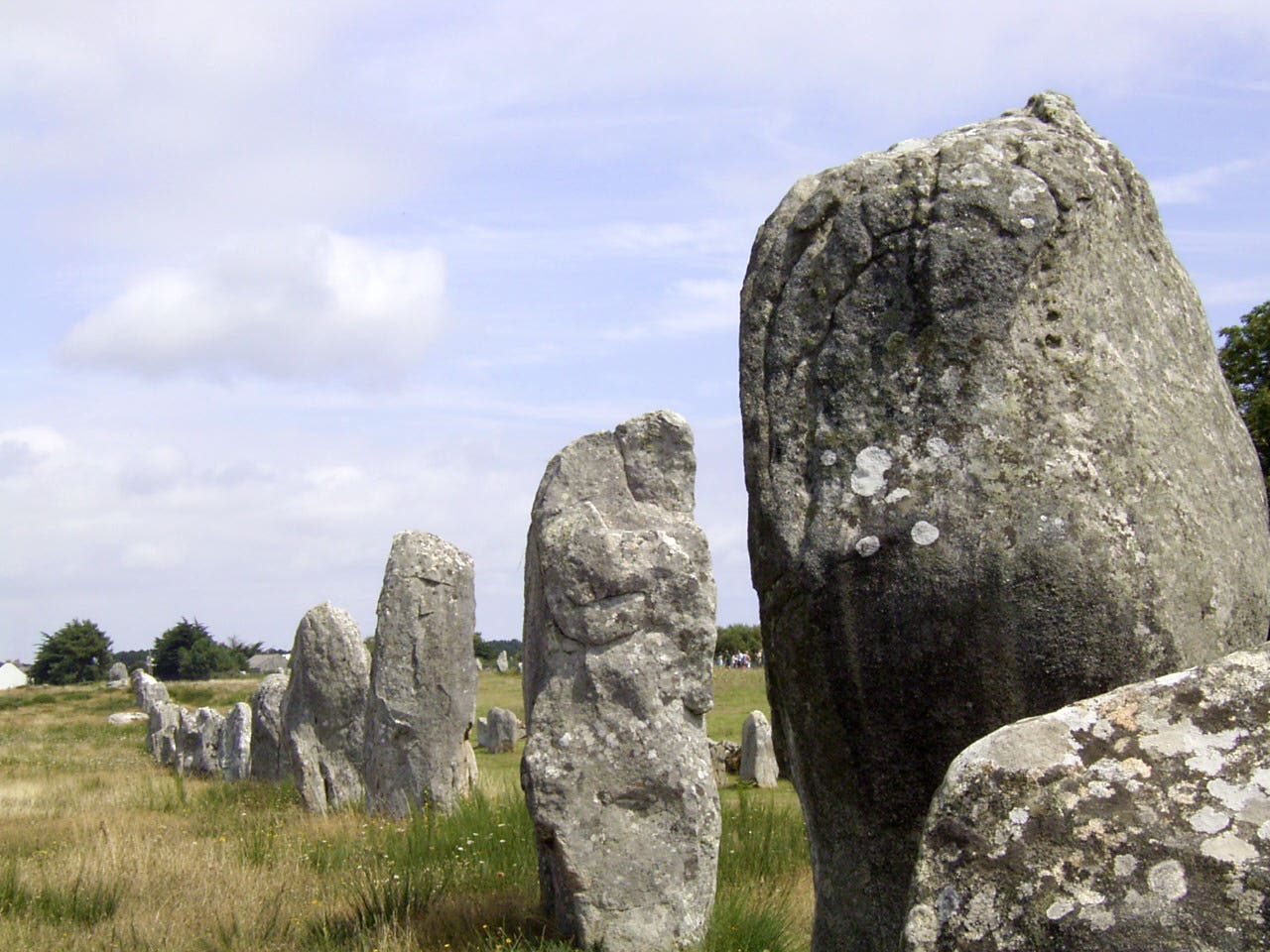France’s Carnac megalithic site unlocks mysteries of ancient stone structures across Europe
New discoveries at Carnac reveal the earliest European megalithic sites, offering insights into ancient rituals and social structures.

Recent excavations at Carnac’s Le Plasker site uncover the origins and rituals behind Europe’s earliest megalithic structures. (CREDIT: CC BY-SA 4.0)
The mysterious alignments of standing stones scattered across Brittany in France have intrigued archaeologists and tourists alike for centuries. Now, fresh discoveries at the Le Plasker site near Carnac have dramatically expanded knowledge of these ancient monuments.
Thanks to advanced excavation techniques and precise radiocarbon dating, scientists have uncovered critical insights about when, how, and why these remarkable structures came into existence.
Ancient Stones and Modern Science
Carnac’s stone alignments stretch impressively over 10 kilometers, from Carnac to Erdeven, making this region home to Europe's densest concentration of megaliths. Researchers have long debated their origins, hindered by a lack of clear evidence. However, a recent excavation at Le Plasker, led by Audrey Blanchard of the French company Archeodunum, has now provided groundbreaking evidence.
Previously unknown sections were excavated at Le Plasker in autumn 2020 before constructing a business park. Researchers discovered well-preserved remains, including standing stone pits, cooking areas, and an impressive, pre-megalithic tomb. The excavation covered roughly 7,000 square meters but likely represents only a portion of a more extensive site.
The site's unique position provided vital clues about why ancient peoples selected this location. Situated on a gentle slope facing southwest, the site overlooks the Bay of Quiberon. During the Neolithic period, around 4500 BC, sea levels were approximately five meters lower, making the ocean clearly visible from the stone alignments. This visibility suggests the sea might have held symbolic importance, influencing where people built these monuments.
Precise Dating Unlocks Mysteries
One challenge scientists previously faced was precisely dating these megalithic structures. Organic materials, essential for radiocarbon dating, rarely survive due to Brittany’s acidic soils. But at Le Plasker, researchers successfully overcame this challenge. They collected nearly 50 radiocarbon samples, one of the largest sets ever from western France, allowing for detailed chronological analysis.
Related Stories
"Thanks to nearly 50 radiocarbon dates and Bayesian statistical modeling, we reconstructed the site's history with unprecedented chronological precision," explains archaeologist Bettina Schulz Paulsson from the University of Gothenburg. Her team used advanced statistical techniques to make sense of this extensive data set.
The findings clearly indicate that the megalithic structures at Le Plasker were built between 4600 and 4300 BC, placing them among Europe's earliest stone alignments. This discovery firmly identifies the Bay of Morbihan as Europe's initial epicenter of megalithic activity, potentially influencing broader traditions across northwest Europe.
Stone Alignments and Fire Rituals
Interestingly, alongside the foundations for these standing stones, archaeologists found evidence of hearths or cooking pits. The closeness of these features suggests rituals involving fire may have been integral to the construction or use of the stone alignments. The exact purpose remains unclear, but possibilities include communal feasts, symbolic gatherings, or rituals to mark seasonal events.
"Whether these hearths were used for lighting, cooking, or feasting during the erection of the stones remains unclear," says Schulz Paulsson. Ongoing sediment and charcoal analyses may soon provide more detailed answers.
Early Tomb and Mesolithic Roots
Perhaps the most intriguing find at Le Plasker is the monumental tomb built around 4700 BC. This tomb, positioned directly above a Mesolithic hut dating back to about 5000 BC, hints at a long history of occupation and ritual at this site. It suggests ancient people intentionally chose locations with existing significance for their monuments, blending new structures with older sacred spaces.
This site's depth of history paints a vibrant picture of the early inhabitants’ social and spiritual lives, emphasizing continuity between Mesolithic hunter-gatherers and later Neolithic communities. The layering of activities, spanning over 300 years, shows an evolving landscape shaped by generations of human endeavor and belief.
Implications Beyond Carnac
These recent discoveries at Le Plasker don't just enhance understanding of Carnac; they reshape broader perspectives about European prehistory. Confirming the early fifth millennium BC as the dawn of megalithic traditions, the data strengthens theories suggesting Brittany influenced subsequent European cultures.
The presence of artifacts from distant regions, such as Alpine greenstone and variscite from Iberia, indicates widespread prehistoric connections and complex social networks. This hints at a shared symbolic language or ritual significance extending far beyond Brittany.
"The alignments in the Carnac region now appear among the earliest megalithic monuments in Europe," emphasizes Schulz Paulsson, underscoring the region’s profound historical importance.
Carnac’s iconic stones are more than mere tourist attractions; they are silent yet powerful testimonies to human innovation, spiritual beliefs, and community organization over six thousand years ago.
Looking Ahead
While the Le Plasker excavation has answered key questions, many mysteries remain. Future research will explore further aspects of this enigmatic site. Continued analysis of sediments, stone fragments, and organic residues will likely shed more light on daily life and ritual practices. These ongoing studies promise even greater insights into the earliest builders of Europe's monumental stone landscapes.
This discovery not only rewrites a significant chapter in European archaeology but also reconnects modern communities with their distant ancestors. Through these stones, we see a shared history, bridging time and culture, continuously inspiring curiosity about our collective past.
Note: The article above provided above by The Brighter Side of News.
Like these kind of feel good stories? Get The Brighter Side of News' newsletter.



